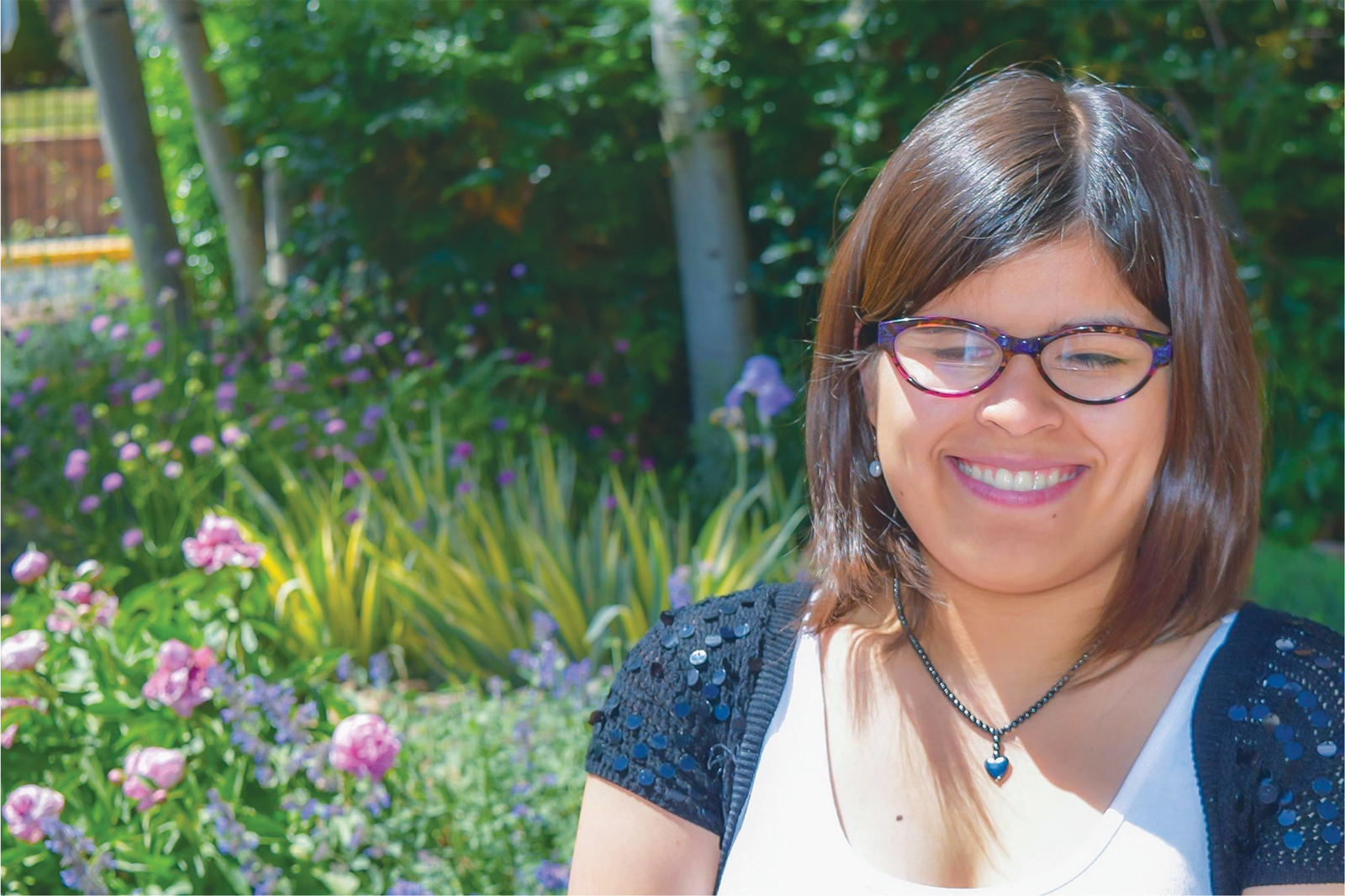Living Buddhism: Hello, Keiko! Thank you for meeting with us. Where does your journey begin?
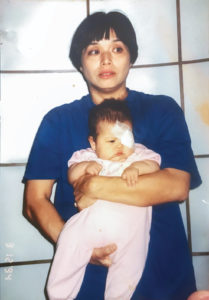
Keiko in her mother’s arms after her eye surgery, 1994. Courtesy of Keiko Brunson.
Keiko Brunson: Thank you very much for this opportunity! I was two months old when my father was holding me as he was chanting Nam-myoho-renge-kyo and noticed a yellow film in my left eye. He had recently read in a medical textbook that this was an indication of a malignant tumor. They rushed me to the hospital, and the doctors learned from a CT scan that it was, in fact, a tumor, which had affected both eyes. They removed my left eye completely, but fortunately saved my right eye through several surgeries and radiation treatments. Furthermore, when I was a toddler, I was diagnosed with hypochondroplasia, a type of dwarfism that affects bone growth and results in abnormally low height. During this time, my family and so many members were chanting for me. I have so much appreciation for everyone who supported us during that time.
That’s truly incredible. What are some of the challenges you faced growing up?
Keiko: Well, being legally blind and of short stature, school was hard for me. I took more than twice the time of my peers to complete assignments due to my vision impairment. I had to have the perfect seat in the classroom to see both the teacher and blackboard in order to follow classroom instruction. A number of teachers treated me unfairly, not understanding that I needed additional resources to keep up with the other kids. My parents often met with the teachers to explain my situation and advocate for me to receive the resources necessary to perform well.
How did your parents encourage you as a child?
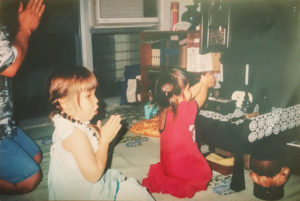
Keiko leads her family in chanting Nam-myoho-renge-kyo. Courtesy of Keiko Brunson.
Keiko: My parents are the best. They always supported me no matter what. They constantly told me to “never be defeated” and to “have the heart of a lion king.” I later realized that all of their encouragement derived from their SGI activities and studying Ikeda Sensei’s writings. I really felt like I could open up to them, which helped me to never feel completely deadlocked or hopeless.
When did you start your own Buddhist practice?
Keiko: When I was in the fourth grade, I began facing deep struggles. I found it nearly impossible to keep up in school, and my peers were becoming more curious and even judgmental about my condition. I didn’t know how I would survive academically, and I lost confidence in myself while interacting with other kids. This is when my grandmother decided to teach me and my siblings how to do gongyo. She taught us one phrase at a time to make sure we recited the sutra correctly. Through my daily practice of chanting and doing gongyo, I kept the flame of hope alive in my heart and did my best in school. Also, my parents created a family tradition where we did a family chanting session if one of us was either going through a struggle or had achieved a victory. They taught us to chant in both good times and bad.
What was your main prayer as a fourth grader?
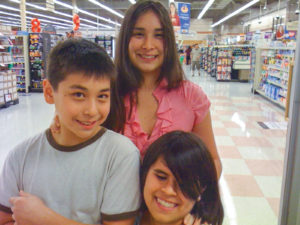
Keiko with her brother, Roy Jr., and sister, Yoshiko (clockwise from left). Courtesy of Keiko Brunson.
Keiko: My strongest desire was to make good friends who accepted me for who I was. Because of my practice, I was able to get the confidence to speak to other kids, and I eventually found honest and kind friends.
My family often hosted SGI meetings, had casual gatherings with members and took us to future division meetings where we made friends. As we got older, we naturally participated in youth activities with our friends, and together studied Sensei’s writings and Buddhism’s profound philosophy of hope. I remember being particularly encouraged by Sensei’s words:
Life … is a constant battle against deadlock. As long as we are alive, as long as we continue challenging ourselves, difficult obstacles will block our way forward. If life were all smooth sailing, if we never encountered setbacks, that in itself would be a sign of stagnation. (July–August 2010 Living Buddhism, p. 51)
Sensei’s encouragement has empowered me to fully appreciate my obstacles as opportunities to limitlessly develop myself. When I went to college in Iowa, my leader’s constant support enabled me to strengthen my practice and love for my SGI family. My experiences in the SGI have taught me valuable lessons that I’ve been able to apply in my daily life.
I understand you are now a teacher. What inspired you to pursue the field of education?
Keiko: I’m proud to say that despite all of my physical challenges, I successfully completed school, and now I’m working on my master’s of education.
When deciding how I wanted to contribute to society, I wavered between education and healthcare. On the one hand, I wanted to be a nurse or physician who could improve the quality of life of those who experience similar challenges.
I was inspired to pursue education, because I wanted to empower students to uncover their mission despite all odds. In high school I had great teachers who encouraged me to pursue education, because I had shown actual proof of how, despite my challenges, I could pursue my dream of going to college and participate in as many extracurricular activities as the other students. I wanted to be that person who provides her students with the confidence and every possible resource to fulfill their dreams.
How have your SGI activities as a member of the Byakuren, the young women’s behind-the-scenes training group, and leadership roles, helped you in your daily life?
Keiko: My SGI activities have definitely provided me with the training to never make excuses for not achieving my goals. Throughout my life I could have given so many excuses for not achieving one thing or another.
I’ve also learned so much about education through the SGI. For example, I heard over and over from Sensei that in a true mentor-disciple relationship, the mentor’s wish is to be surpassed by the disciples. In my view, the role of a teacher is the same: to enable their students to surpass their teachers. As an SGI leader, I’ve encouraged young women to never give up in striving for their goals until they achieve them. Similarly, teachers should help students not retreat in their endeavors, no matter how long it takes. Just as each member has a unique mission and skill set, each student has a unique learning style and strength, so the teacher has a responsibility to get to know each one in order to unlock their full potential.
As a region young women’s leader, what hurdles have you overcome to fulfill your responsibilities and fully support your members?
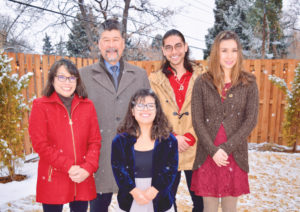
Keiko with her family (l-r) mother, Carol, father, Roy, brother, Roy Jr., and sister, Yoshiko, January 2021.
Keiko: My main challenge has been transportation, especially prior to the COVID-19 pandemic. I’m unable to drive, and Denver isn’t well known for its public transportation. Despite this, my region encompasses nearly all of Denver and its surrounding suburbs. But based on my SGI training, I’ve learned that the only obstacle is in my mind. I navigated trains, buses and used assisted technology to travel throughout my region. When I visited a new area, I would study the transportation beforehand, and often had to ask strangers for directions. I even needed to speak to the bus drivers to make sure they announced each stop, so I knew where to get off. Of course, there were many times when family and members generously offered me rides, especially when I was completely lost and needed someone to pick me up. Each home visit and discussion meeting was a great adventure for kosen-rufu that I deeply cherish. Of course, currently all of our activities our virtual, so those are no problem for me to attend!
When I’m able to encourage a member and see them break through, I’m so proud of their never-give-up spirit. Nothing makes me happier than to experience a member break through their limitations. I’ve learned that you can make the impossible possible with this practice.
Those are truly noble and humbling efforts. What are some of your future goals?
Keiko: My main goal for 2021 is to complete my master’s program in special education, and to be a certified special education teacher. Toward 2030 and beyond, I want to inspire countless young people with special needs to develop the confidence they need to achieve all of their dreams.
You are reading {{ meterCount }} of {{ meterMax }} free premium articles

